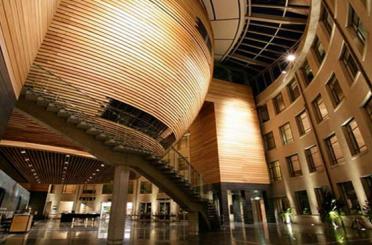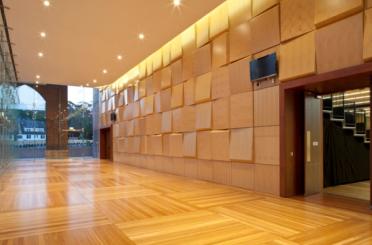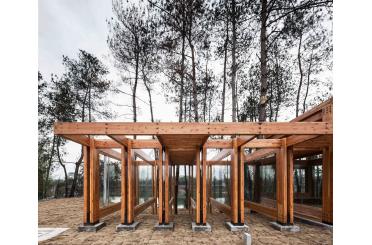
Overview
This project offers a new solution to providing school infrastructure in Vanuatu. The demand for primary level education in Vanuatu continues to rise, driven by strong population growth and the introduction of fee-free schooling. The Ministry for Education, tasked with supplying new educational infrastructure, has been looking at alternative models to meet demand. A community-directed school infrastructure pilot program was trialled in 2011/2012. The Takara School is part of this program.
Designed by Kaunitz Yeung Architecture, the Takara School on Efate Island was developed as an alternative model to concrete classrooms favoured by the Ministry. The design set out to demonstrate a more cost-effective and environmentally friendly way to build robust educational infrastructure in Vanuatu, utilising local capacity – through resources and labour – wherever possible.
Timber was specified throughout the structure because it can be grown and sourced locally, limiting logistic issues in remote islands. Timber is also preferred over concrete because it can utilise local carpentry skills and be repaired and maintained by the community.
Infill elements such as walls and windows have been constructed using local materials such as woven bamboo for window hatches and natangura (sago leaf) roofing.
The total expenditure for the construction was $54,500, compared with the average cost of standard, locally constructed concrete classroom of $105,000. This is a saving of 48 per cent.
Structure
The construction of the Takara School was undertaken by the community of Takara, Efate island, and supervised by the Province Education Office and Kaunitz Yeung Architecture.
Most classrooms in Vanuatu are built using reinforced concrete and concrete blocks. In Vanuatu, gravel, sand and cement are expensive to transport between islands and reinforced concrete is difficult to produce to the standards required for earthquake loading.
A timber portal frame is the main structure of the Takara classroom prototype. It addresses the requirements of western building standards, forming a strong and durable structure that can be repaired by the community following earthquakes and cyclones. The frame design takes its cues from the local vernacular, articulating posts and using scissor trusses.
Embedded in the design prototype is the ability for the community to customise the timber portal frame depending on available resources. In the case of this classroom at Takara, the building includes a hand-woven natangura (sago leaf) roof, bamboo window hatches and dead coral infill walls in accordance with traditional local design principles. The Takara and surrounding communities supplied the necessary sand, gravel, thatch and woven bamboo hatches. Local timber species were used in construction.
Exterior
Takara School has a timber portal frame clad with timber, timber louvers, bamboo window shutters and a natangura (sago leaf) roof.
Passive solar techniques were used throughout. The roof pitch, at 35 degrees, when combined with the fixed timber louvers at the gable ends facilitates convection. Gaps were left in the cladding under the eaves where the external wall is protected from the rain to enhance cross ventilation. The natangura roof has a high insulation value that keeps the building cool from the tropical sun.
Interior
The interior of the Takara School has timber-clad walls and local stone infill panels, exposed ceiling, bamboo window shutters and a concrete floor. Timber desk and seat furnishings feature throughout.
The exposed rafter ceiling and louvers at gable ends increase natural ventilation in the classroom. Modelling showed the ventilation area provision of the prototype design is approximately three times that of a reinforced concrete building, and should provide greater thermal comfort for users.
Lighting within the classroom is approximately 20 per cent greater than the standard reinforced concrete classroom, and should provide enhanced visual comfort for the students.
The Takara School is also approximately 5 per cent larger than a reinforced concrete classroom in terms of internal floor area.



